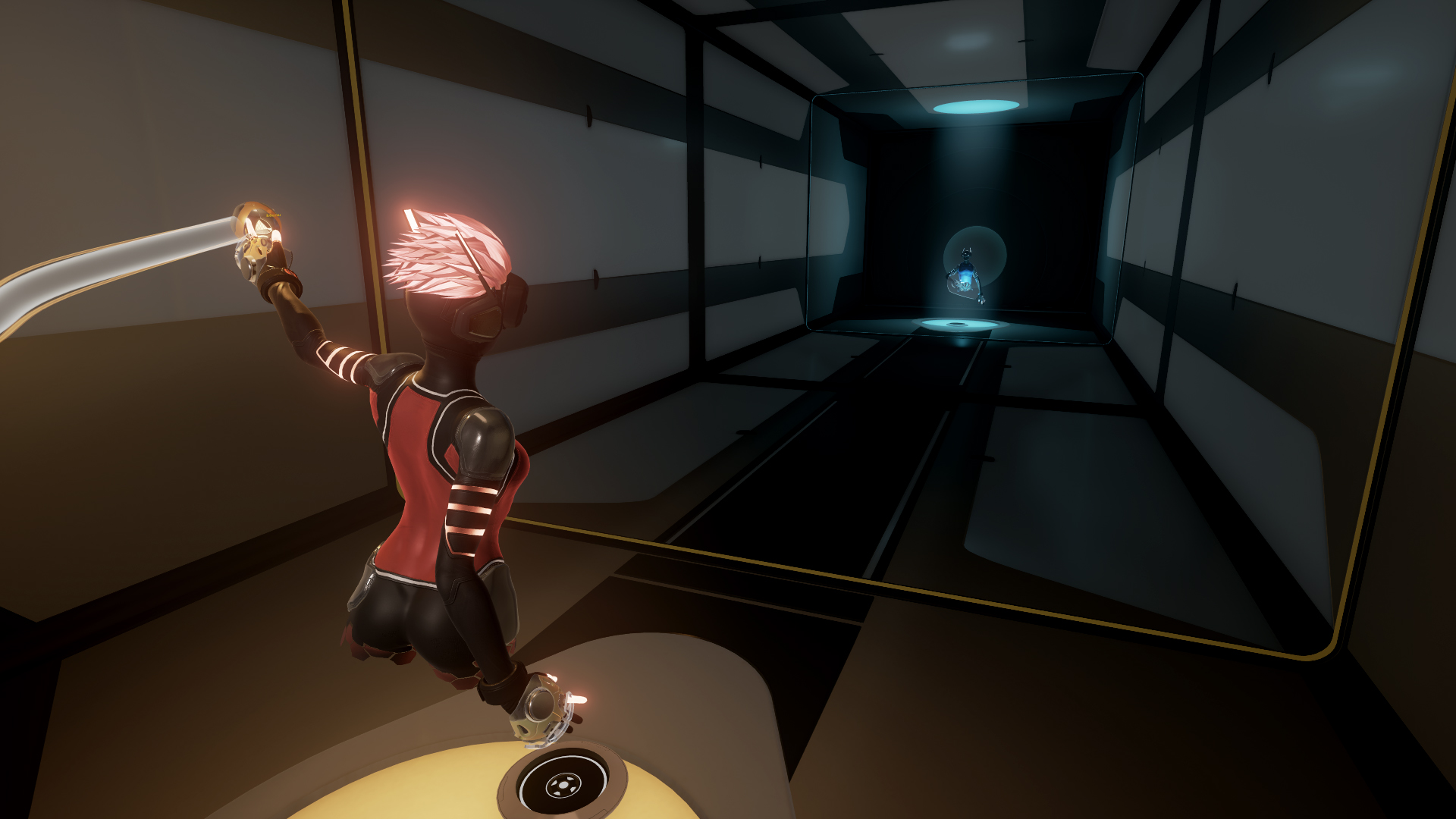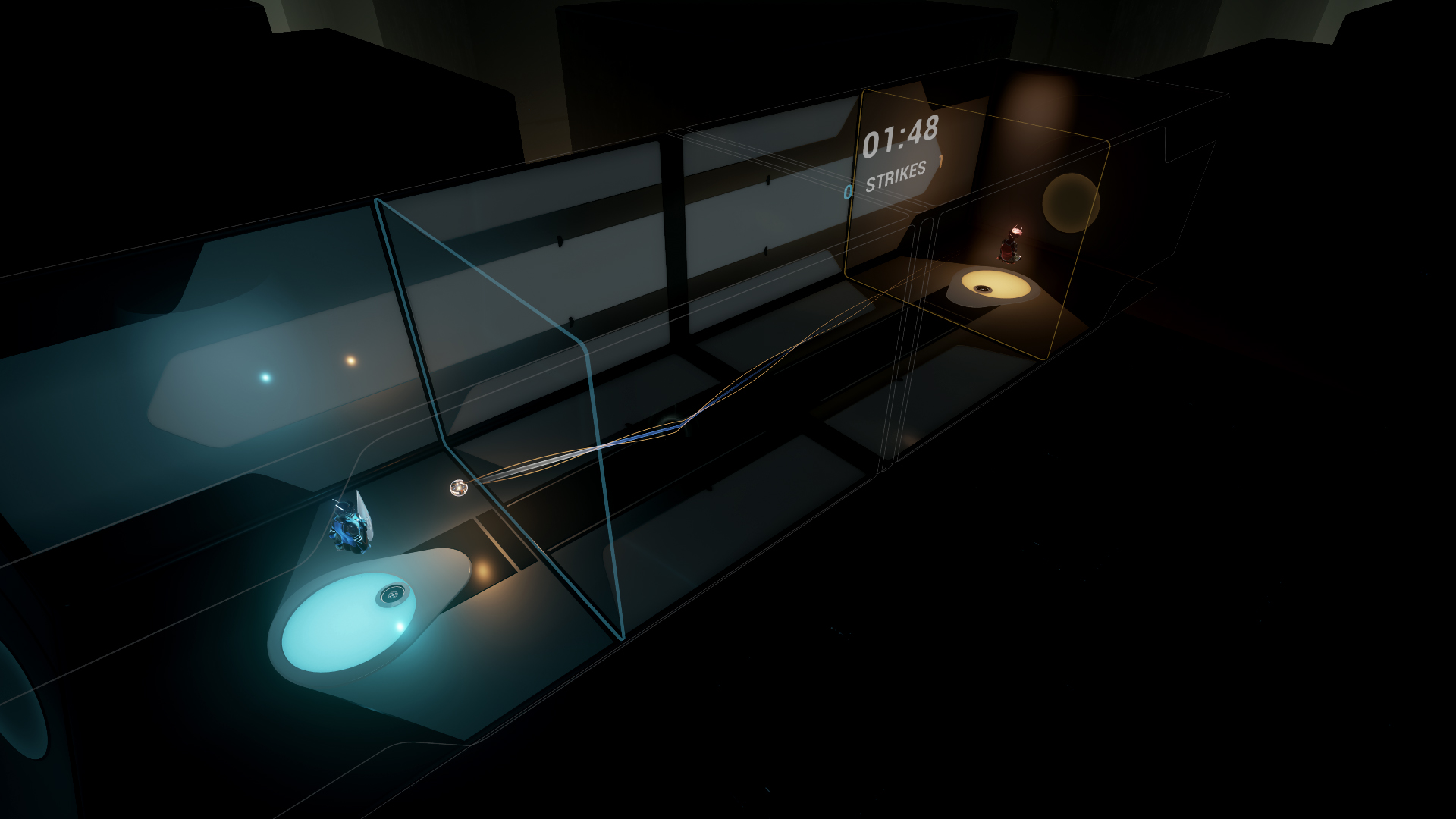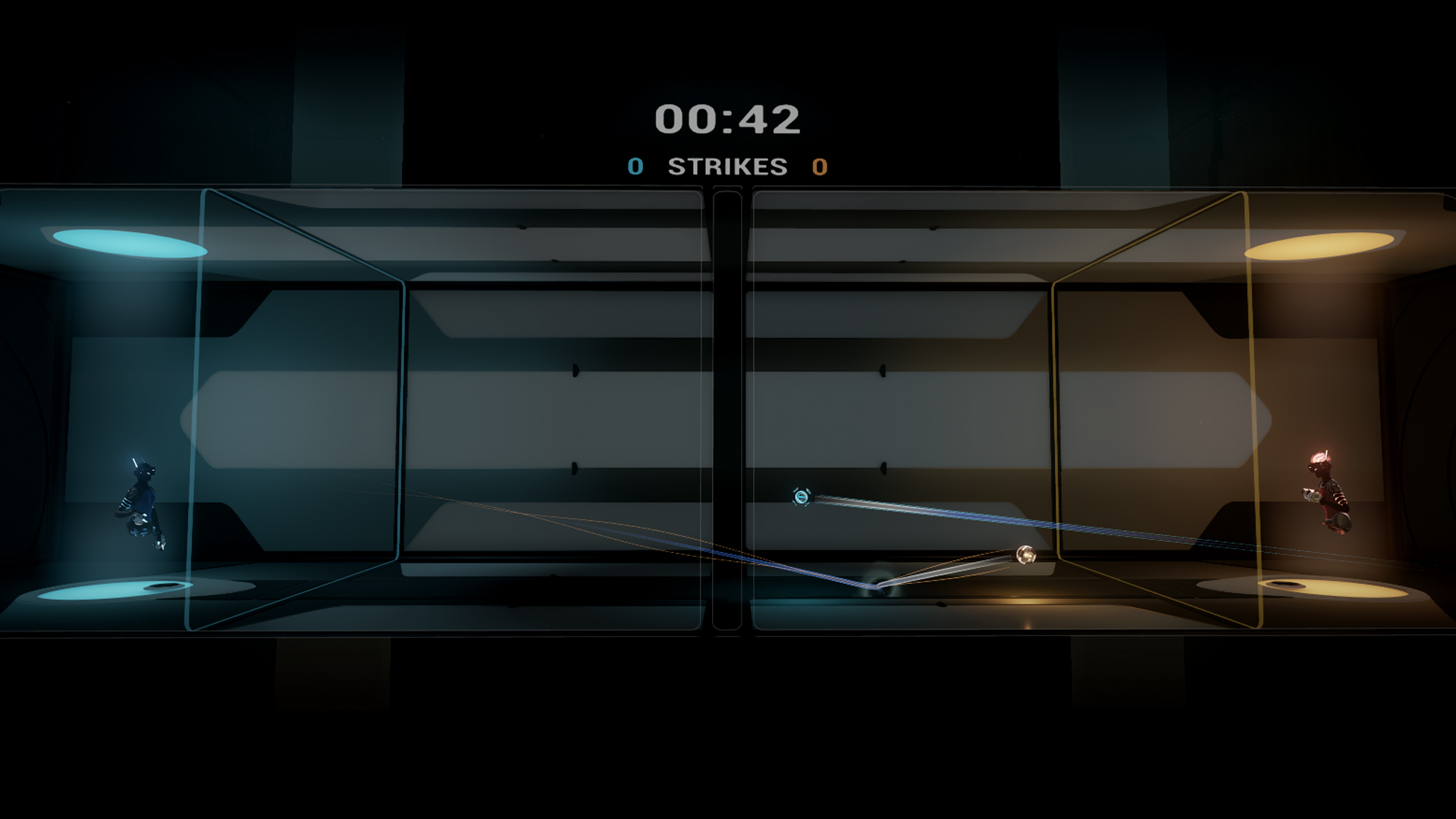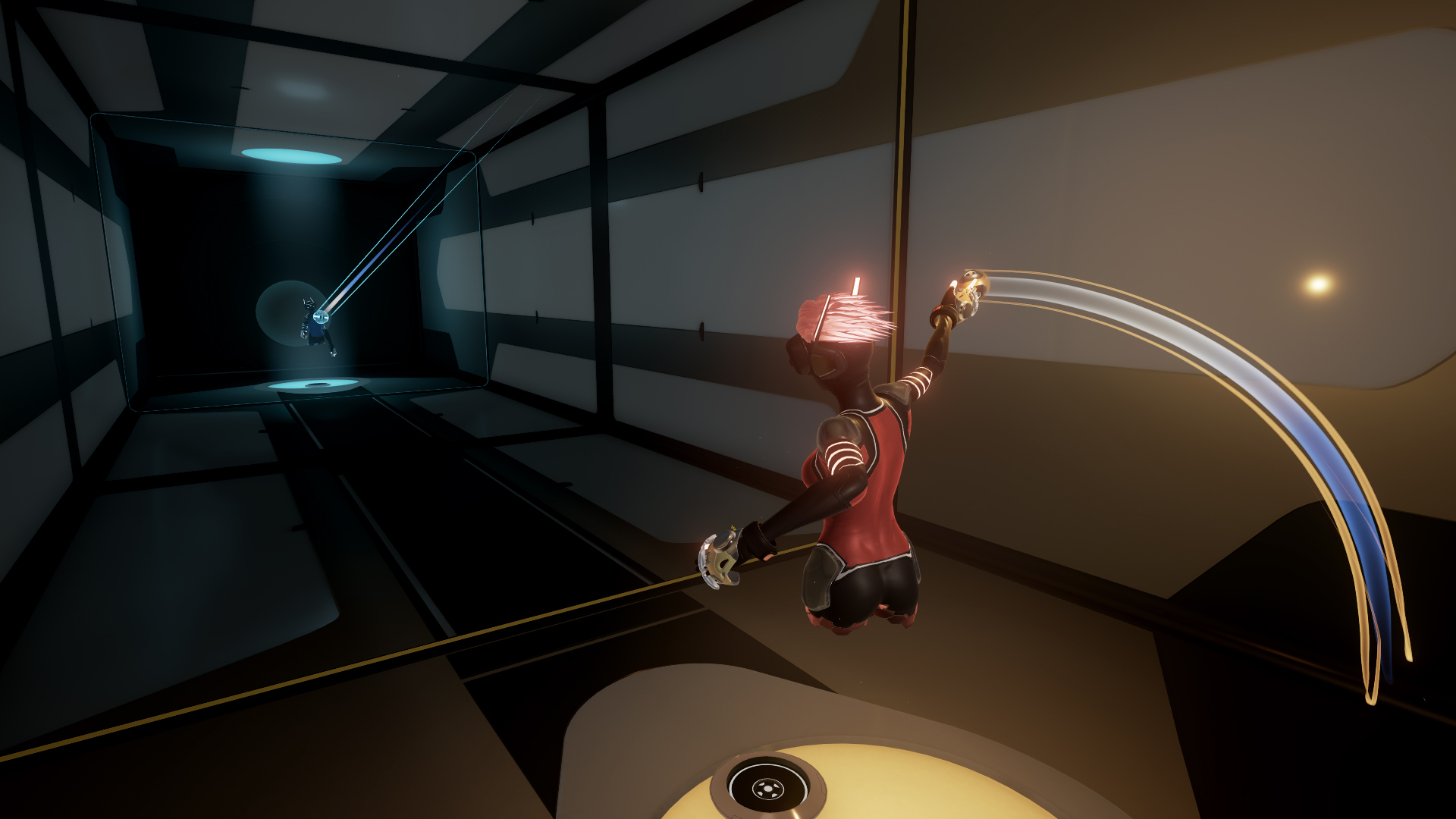CCP Games Gets Sporty With 'Sparc' Cross-Platform VR Title (Hands-On)
CCP Games debuted a new VR game at GDC. However, it may be shocking to some to hear that it’s not another addition to the popular Eve series, but an entirely new game in a completely different genre: VR sports. It will, as with Eve: Valkyrie, offer cross-platform play, though.
Sparc is a skill-based, fast-paced sport that combines the basic concept of dodgeball (don’t get hit by the opponent’s ball) with mechanics similar to baseball, bowling, and tennis. It’s a unique and original game, similar to what you could expect children to create with a ball on the playground. But why would CCP Games shift focus from its franchise series to seemingly unfamiliar territory in VR sports?
“After our early experiments with standing VR gameplay, we were excited by the idea of building an original sport designed for the current generation of VR hardware. We’ve designed 'Sparc' so that players can express and improve their skill through their physical actions,” said Morgan Godat, Executive Producer at CCP Atlanta. “Ultimately, we want players to think of 'Sparc' as a virtual court in their living room where they can meet and compete with other players from around the world.”
Hands Up, Hands Down
Sparc gives you an avatar that projects a full upper body (head, torso, arms), and we began the demo by calibrating our personal avatar. A mirror stands in front of you, and you're instructed to put your hands up and hold them there until you see the green check mark appear.
Next, you lower your arms at your sides and let them hang still until the calibration is complete. This makes the avatar’s approximated arms a better representation of your actual limbs, making the joints appear almost exactly where your real ones are. Once you finish calibration, you can return to the main menu and start a game, or watch others play from Courtside, a social area that allows you to view other players' matches from your HMD or main 2D display.
Do What Now?
Players are placed in an enclosed playfield that resembles a tennis court in size and shape, with each player positioned on opposite sides. A ball sits on a pedestal of light in front of you, and you can pick it up and release it using the trigger.
The object of the game is to strike your opponent with your ball by way of throwing, but it’s not as simple as it sounds. When you are in possession of your own ball, it produces a shield for your arm that will deflect one attack (providing you use it to deflect an incoming ball), but throwing your ball at your opponent and getting it back will recharge it.
Get Tom's Hardware's best news and in-depth reviews, straight to your inbox.
However, if your opponent successfully dodges or deflects your ball, you have to either catch it (if it’s coming towards you, reach out and squeeze the trigger) or dodge it, as your own ball can damage you and give your opponent a point. You can also deflect your opponent’s balls by simply punching them. Your ball will automatically return to the pedestal if you strike your opponent, drop it, or if you don’t catch it when it returns to you (whether you get hit or not). To further complicate matters, each player’s balls will increase in size and speed with consecutive strikes.
Put A Spin On It
Sparc’s in-game physics simulate spin with impressive accuracy; a flick of the wrist as you release the trigger to throw the ball will actually affect its trajectory and how it collides against the walls, floor, and ceiling. You can throw curveballs and change-ups, or bank or bounce a ball off of the walls to catch your opponent off guard and score a point. This makes the game feel less like a basic match of VR pong and more like a legitimate athletic competition, as the physical skills and throwing methodology are strikingly similar to real-life sports such as dodgeball, baseball, bowling, and tennis--but all at the same time.
Game On!
You can play the game by yourself against an AI opponent (with multiple game and training modes), but CCP showcased Sparc’s multiplayer capabilities with both an HTC Vive and an Oculus Rift (with Touch), so Rexly Peñaflorida II and I were able to take advantage of the two-player game modes. Eager to redeem myself and settle the score from our last one-on-one VR encounter, we went toe-to-toe in a battle of sheer endurance and physical prowess.
Unsurprisingly (cough), I emerged victorious. Although I shutout Rexly in our best-of-three series, he succumbed by only one point in each of our two matches, and only after we had reached the time limit. But a win is a win, and we’re headed into day three of GDC all tied up.
More To Come
Sparc is a bit of an oddity in the still-young VR game market, and therefore, it’s difficult to describe it in a few short words that make for an easy-to-remember acronym--this isn’t an FPS, RTS, RPG, MMO, or even a MOBA. It could be compared to other VR titles such as Holoball, but that would be oversimplifying Sparc’s unique gameplay, mechanics, and the capabilities (and impact) of its in-game physics engine.
The game is still in development, and we saw only a small fraction of the Sparc’s potential. However, CCP told us about a more difficult Pro Mode that eliminates each player’s protective shield and dramatically increases the rate at which the balls grow from consecutive hits. Additionally, the company claimed that the game will offer different arenas and avatars in the future.
Although specific details including pricing and release date aren’t yet known, CCP Games said that we should expect to see Sparc available for Oculus Rift, HTC Vive, and PSVR sometime this year.
Derek Forrest was a contributing freelance writer for Tom's Hardware. He covered hardware news and reviews, focusing on gaming desktops and laptops.



